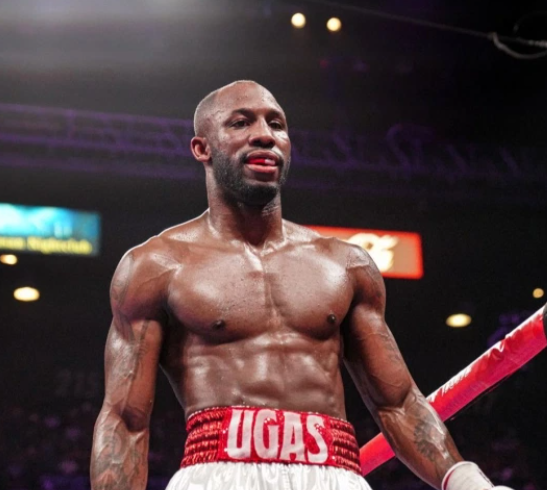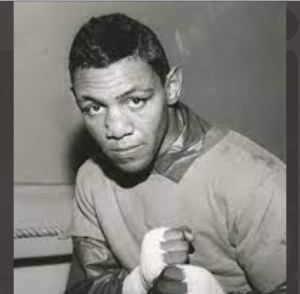Featured Articles
Pacquiao-Ugas Ruminations and a Toast to the Late Stanley “Kitten” Hayward

Before the Pacquiao-Spence fight was taken off the wagering board, Manny was a plus 170 underdog. When the new line was posted on Pacquiao-Ugas, the Filipino icon shifted into a solid favorite, minus 350 or thereabouts depending on where one shops.
Was a shift of that magnitude justified? True, a good betting line is one that allows the bet-taker to achieve a balanced book, but the question here is whether the Pacquiao-Ugas betting line exaggerates PacMan’s chances of winning.
Errol Spence and Yordenis Ugas had a common opponent in Shawn Porter. Spence defeated Porter whereas Ugas lost to him but both fights were very close. When the scores were announced for the Ugas-Porter fight (115-113, 116-112, 111-117), the crowd booed and Ugas left the ring in disgust.
It seemingly does not bode well for Ugas heading into his match with Pacquiao that he won by only a split decision in his most recent fight with Abel Ramos. However, most everyone thought that it should have been unanimous. “Despite what the scorecards showed, this was a dominant outing for Ugas,” a “clinical performance,” said ESPN’s Steve Kim.
“Now that I’m a world champion, I want all the big names in the welterweight division,” said Ugas after the fight. On Sept. 21, he gets his wish and — while acknowledging that we have certainly been wrong before — we rate the Cuban a very live underdog.
R.I.P. Stanley “Kitten” Hayward
If you were a boxer in Philadelphia during the mid-to-late 1960s, and if you were a middleweight, give or take a few pounds, you could get battle-hardened without ever leaving the gym. Philadelphia was a hornets nest of tough middleweights, give or take a few pounds, and their gym wars were legendary.
Stanley “Kitten” Hayward, who went on to fight for the world junior middleweight title, was right in the thick of it.
Hayward died last week at age 82. John DiSanto, a close friend of Hayward, broke the news on his Philly Boxing History web site and the news became more generally known when Hall of Fame boxing writer Nigel Collins announced the news on his twitter page. There has been no mention of it, at least not yet, in the Philadelphia papers which says something about how the sport of boxing has fallen out of the mainstream.
Inside that hornets nest were such notables as Bennie Briscoe, Eugene “Cyclone Hart,” Willie “The Worm” Monroe, Bobby “Boogaloo” Watts, and Gypsy Joe Harris – fabled names from a fabled era of Philadelphia boxing. And, of course, Stanley “Kitten” Hayward who fought all of them with the exception of Watts and defeated Briscoe in the first of their two meetings.
Hayward defeated two Future Hall of Famers: Emile Griffith and Curtis Cokes. He stopped Cokes in the fourth stanza of a Pier 6 brawl at the Blue Horizon. For goosebumps, the fight ranks among the best ever held in that intimate sock palace. (Unfortunately, it was a dud at the gate. The weather, unseasonably cold and wet, depressed attendance.)

kitten
Hayward won a 10-round split decision over Griffith at the Spectrum, but Griffith turned the tables in the rematch, winning a 12-round decision over Hayward at Madison Square Garden. In that fight, Griffith took control after “Kitten” suffered a bad cut over his left eye in the fifth round. Prior to that point, the Philadelphian was out-boxing him.
Stanley Hayward’s title shot came between his two fights with Emile Griffith. The vacant WBA 154-pound title was at stake when he locked horns with Freddie Little in Little’s adopted hometown of Las Vegas.
The title was vacant because Little was jobbed when he challenged Sandro Mazzinghi five months earlier on Mazzinghi’s turf in Rome. Little was up 7-1 on the Associated Press card when the ring doctor stopped the match after the eighth round to prevent the Italian from taking more punishment, whereupon the WBA-appointed German referee saw fit to declare the bout a “no contest.”
There was such a stink that the WBA declared the title vacant and mandated a rematch (sound familiar?). When Mazzinghi declined, Stanley Hayward got the call.
Freddie Little, who finished his career with a 51-6 (31) mark, was very good. He never got enough credit when he was fighting because the junior middleweight division was in its infancy and because he wasn’t colorful. The Picayune, Mississippi, native was a high school health teacher who went on to hold important state government posts in Carson City and serve on the Nevada Athletic Commission. Ah, but I digress.
Little controlled the 15-round fight with his jab, Hayward was troubled by cuts once again, and the title stayed in Las Vegas. Hayward soldiered on but was never the same. He left the sport in 1977 with a record of 32-12-4.
During his boxing days, Hayward was a notorious ladies man and reckless with his money. In retirement, he was a different cat (er, kitten). He spent 33 years as a Court Crier for the city of Philadelphia and was in good shape financially when his health started to decline following a stroke last year. He leaves behind his wife of 30-plus years, the former Vernell Washington, and a daughter. We here at TSS send our condolences to his loved ones.
Check out more boxing news on video at the Boxing Channel
To comment on this story in the Sweet Science CLICK HERE
-

 Featured Articles3 weeks ago
Featured Articles3 weeks agoVito Mielnicki Jr Whitewashes Kamil Gardzielik Before the Home Folks in Newark
-

 Featured Articles4 days ago
Featured Articles4 days agoResults and Recaps from New York Where Taylor Edged Serrano Once Again
-

 Featured Articles1 week ago
Featured Articles1 week agoFrom a Sympathetic Figure to a Pariah: The Travails of Julio Cesar Chavez Jr
-

 Featured Articles3 days ago
Featured Articles3 days agoResults and Recaps from NYC where Hamzah Sheeraz was Spectacular
-

 Featured Articles4 weeks ago
Featured Articles4 weeks agoCatching Up with Clay Moyle Who Talks About His Massive Collection of Boxing Books
-

 Featured Articles1 week ago
Featured Articles1 week agoCatterall vs Eubank Ends Prematurely; Catterall Wins a Technical Decision
-

 Featured Articles4 days ago
Featured Articles4 days agoPhiladelphia Welterweight Gil Turner, a Phenom, Now Rests in an Unmarked Grave
-

 Featured Articles3 weeks ago
Featured Articles3 weeks agoMore Medals for Hawaii’s Patricio Family at the USA Boxing Summer Festival



















